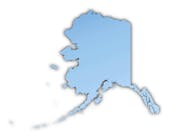Exploration Operating Co. Ltd. has confirmed discovery of two large natural gas fields on Block 6 in the Nam Con Son basin off South Viet Nam.
The fields are expected to be developed at a cost of $1 billion with supply earmarked for Viet Nam's emerging domestic gas market. Lan Tay (West Orchid) and Lan Do (red Orchid) fields hold combined reserves of 2 tcf gas, BP's midrange estimates show.
Lan Tay pay lies at a depth of 1,600 m in 125 m of water, while Lan Do pay lies at a depth of 1,100 m in 180 m of water. The fields are about 350 km from the mainland.
First gas delivery is tentatively scheduled from 1988.
BP expects to deliver the gas via a proposed pipeline whose route lies within striking distance of Viet Nam's biggest oil fields, Bach Ho, Dia Hung, and rong. Bach Ho, Viet Nam's only source of commercial hydrocarbon production, and Dia Hung, currently under development, hold significant gas reserves.
BP holds 30% interest in and is operator of Bloc 6. Its partners are Norway's Den norske stats oljeselskap AS 15% and India's Oil & Natural Gas Commission (ONGC) 55%.
State owned Petrovietnam has an option to carve a 5% interest out of the BP and Statoil stakes.
The group is working closely with the Vietnamese government to secure early development of the fields, BP said.
GAS MARKET POTENTIAL
To illustrate the finds' importance, BP said the, fields hold enough gas to help provide Ho Chi Minh City's current power requirement of 1.2 million kw for more than 25 years.
"Our current plans are to pipe the gas ashore and then on to the area of Ho Chi Minh City," said BP Exploration Managing Director John Browne, "where it could be used in the industrial sector, in the manufacture of fertilizers, and potentially in power generation.
"We are also proceeding with our exploration program in Blocks 5/2 and 5/3, where again we are targeting gas."
BHP Petroleum Pty. Ltd., operator of Dai Hung, and General Electric Co. this year disclosed plans to build an $810 million gas fired power plant and related 600,000 metric ton/year urea fertilizer plant along the Thi Vai River near Ho Chi Minh City (OGJ,. June 6, p. 44). The project would be fed by gas from Offshore Viet Nam fields.
Separately, plans were announced for a 125 mile pipeline from Bach Ho to move its gas to ashore (OGJ, July 18, p. 22). Bach Ho gas currently is flared.
In addition a wildcat drilled by Royal Dutch/Shell Group and a South Korean group this year flowed 22 MMcfd of gas and 3,419, b/d of oil on Block 11-2, which adjoins the BP acreage (OGJ, Mar. 7, p. 41).
So far, BP has drilled seven wells on Block 6 since BP and Statoil. acquired a farmout on the license in 1992 (OGJ, Dec. 28, 1992, p. 26). At the time of the farmout, ONGC was operator, drilling two wells after acquiring the block in 1988.
BP plans no further appraisal drilling of Lan Tay and Lan Do. Next drilling is expected to be development wells. Exploration drilling on Block 6 under BP cost about a total $300 million.
Copyright 1994 Oil & Gas Journal. All Rights Reserved.


